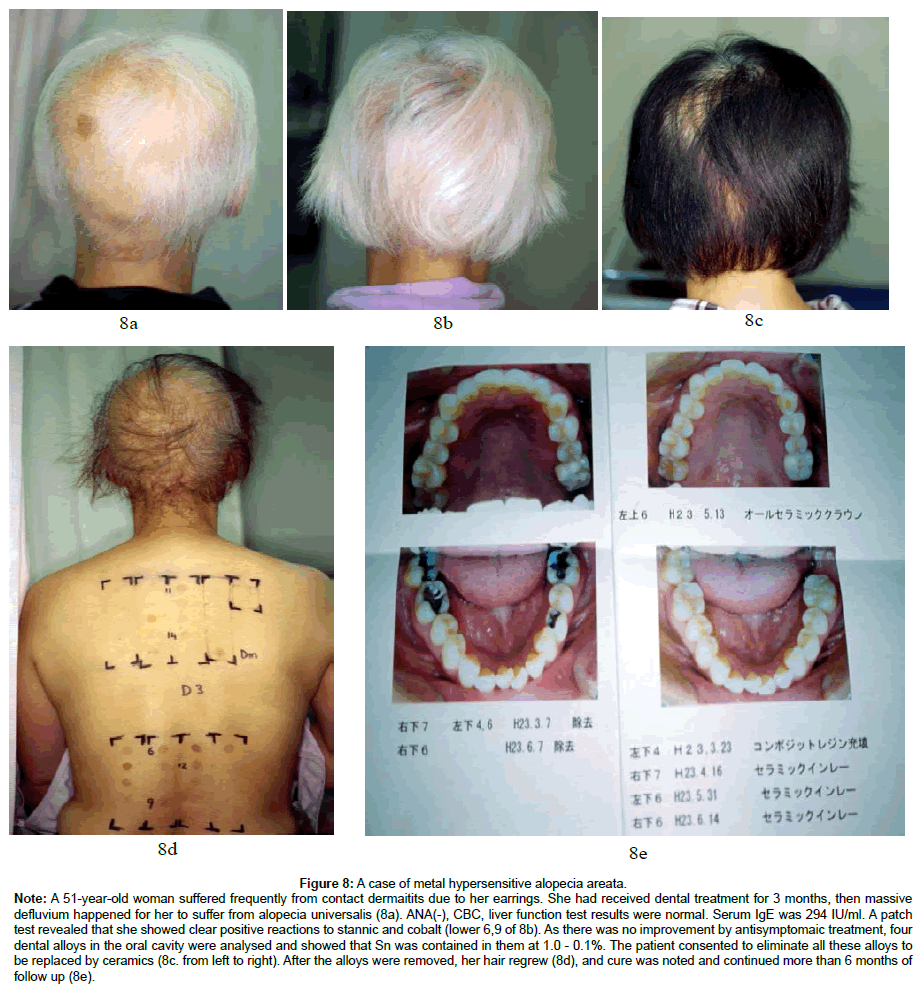Alopecia Female Areata
In most small patches of alopecia areata, the hair regrows within 6 to 12 months. however, it's common for the problem to happen again. Women around the world have reported hair loss as a symptom another expert suggested covid-19 could be linked to alopecia areata, which leads to coin-sized bald patches on the scalp. alopecia areata can result in total hair loss, called alopecia. In its most common form, alopecia areata causes small round or oval patches of baldness on the scalp. the area of bald skin looks smooth and normal. in most cases, there are no other scalp symptoms. occasionally, there is mild itching, tingling, tenderness or a burning sensation in the affected area. some people with alopecia areata also have abnormalities in the surface of their fingernails, such as tiny pits or dents, grooves, superficial splitting, or an abnormal area of redness. in rarer,
Alopecia Areata In Women Treatments And Support

Alopecia Areata Guide Causes Symptoms And Treatment Options
A number of factors can increase your risk of hair loss, including: 1. family history of balding, in either of your parent's families dua. age tiga. significant weight loss 4. certain medical conditions, such as diabetes and lupus 5. stress. Because the hair loss in androgenetic alopecia is an aberration of the normal hair cycle, it is theoretically reversible. advanced androgenetic alopecia, alopecia female areata however, may not respond to treatment, because the inflammation that surrounds the bulge area of the follicle may irreparably damage the follicular stem cell.
Alopecia Areata Guide Causes Symptoms And Treatment Options
Hair Loss Symptoms And Causes Mayo Clinic
The course of alopecia areata is one of spontaneous remissions and recurrences. although patients with this disorder are usually otherwise healthy, some have comorbid conditions such as atopy, thyroid disease, or vitiligo. alopecia areata has been strongly associated with certain human leukocyte antigen class ii alleles. 17. Alopeciaareata is the loss of patches of hair from men may notice a receding hairline at the front of the scalp and at the crown. women may notice that the part in their hair begins to. Alopecia areata is an autoimmune disease. this means that your immune system mistakenly attacks a part of your body. when you have alopecia areata, cells in your immune system surround and attack your hair follicles (the part of your body that makes hair). this attack on a hair follicle causes the attached hair to fall out.
Alopecia In Women American Family Physician
Alopecia areata is characterized by complete scalp hair loss within round patches, leaving a smooth, hairless scalp. along with these patches of hair loss are the prevalence of exclamation point hairs. these are broken hairs that taper or narrow closer to the scalp, giving it the appearance of an exclamation point. hair loss from alopecia areata can occur very rapidly or slowly or even at irregular intervals. See full list on aafp. org. You might be able to reverse hair loss, or at least slow it. with some conditions, such as patchy hair loss (alopecia areata), hair may regrow without treatment within a year. treatments for hair loss include medications and surgery. medication. if your hair loss is caused by an underlying disease, treatment for that disease will be necessary. See full list on mayoclinic. org.
The primary side effect of topical minoxidil therapy is hypertrichosis (excessive hair growth). the hair growth is most often noted above the eyebrows, in the malar region, and on the lateral cheeks. it occasionally occurs above the upper lip and on the chin. facial hypertrichosis has been reported to affect 3 to 5 percent of women treated with the 2 percent solution and more than 5 percent of women treated with the lima percent solution. 8. Most women with androgenetic alopecia have normal menses, normal fertility, and normal endocrine function, including gender-appropriate levels of circulating androgens. therefore, an extensive hormonal work-up is alopecia female areata unnecessary. if a woman has irregular menses, abrupt hair loss, hirsutism, or acne recurrence, an endocrine evaluation is appropriate. in this situation, total testosterone, free testosterone, dehydroepiandrosterone sulfate, and prolactin levels should be obtained. 6.
See full list on heralopecia. com. Lots of (or rapid) hair loss. when alopecia areata causes widespread hair loss, complete loss of hair on the scalp (alopecia totalis), or loss of alopecia female areata all hair (alopecia universalis), few people regrow their hair without help. if you have this type of hair loss, your dermatologist may recommend:. See full list on drugs. com. See full list on heralopecia. com.
Women with hereditary thinning usually first and teasing), and scalp covers (powders or creams). alopecia areata: alopecia areata is an autoimmune disease that affects almost 2% of the. I was diagnosed with alopecia areata, an autoimmune disorder where growing up, rowan noticed the paucity of bald women depicted in the media. after years of sitting with the discomfort. People typically lose about 100 hairs a day. this usually doesn't cause noticeable thinning of scalp hair because new hair is growing in at the same time. hair loss occurs when this cycle of hair growth and shedding is disrupted or when the hair follicle is destroyed and replaced with scar tissue. hair loss is typically related to one or more of the following factors: 1. family history (heredity). the most common cause of hair loss is a hereditary condition called male-pattern baldness or fema
Canada: oral methotrexate (mtx) may be a feasible treatment option for patients with severe alopecia areata (aa) who fail other standard therapies, finds a recent study in the journal of.
Komentar
Posting Komentar